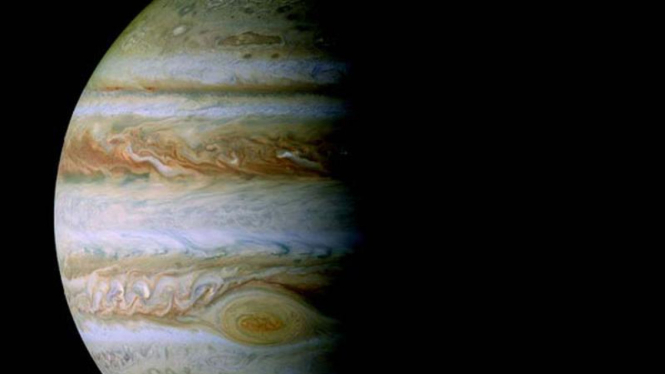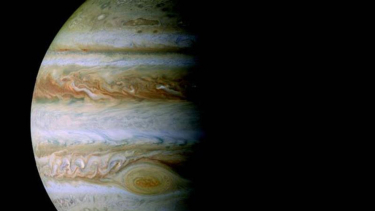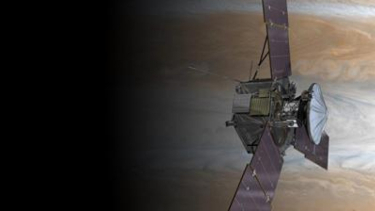- NAS A/ JPL / Space Science Institute
VIVA – Jupiter’s moon lo is the most geologically active body in the solar system. Last year, lo has a record-breaking volcanic explosion. It is according to a scientist.
Physicist Dr. Jeff Morgenthaler of the Planetary Science Institute (PSI) has been monitoring volcanic activity on Io every year since 2017. The Jovian moon, he said, shows some sort of outburst every year, but the largest one yet was recorded in the autumn of 2022.
Io is the innermost and third-largest of Jupiter’s four large moons and is slightly larger than Earth’s Moon.
Like the other Galilean moons, it was discovered by Italian astronomer Galileo Galilei in 1610, and named after Io, a priestess of Hera and one of Zeus' lovers in ancient Greek mythology. lo has more than 400 active volcanoes, many of which belch out plumes of sulfur and sulfur dioxide that can rise as high as 300 miles above the moon's surface.
Juno, satelit pemantau planet Jupiter.
- space.com
The volcanism is a result of the intense tides that Io feels, both from its parent planet and from its two other Galilean moons, Europa and Ganymede.
In his study, Morgenthaler used data from PSI's Input/Output observatory (IoIO), located near Benson, Arizona. The observatory uses the coronagraphy technique, in which bright light from Jupiter is dimmed so that faint gas near the gas giant can be imaged.
Between July and September last year, Morgenthaler said two gases detected by IoIO - sodium and ionized sulfur, began to brighten and remained in that state until December.
However, the ionized sulfur, which forms a doughnut-shaped structure encircling Jupiter known as the “Io plasma torus” was not as bright in the recent outburst as it has been in previous years.
“This could be telling us something about the composition of the volcanic activity that produces the outburst. Or it could be telling us that the torus is more efficient at ridding itself of material when more material is thrown into it.” Dr Morgenthaler said.
The observations, the physicist explains, have profound implications for NASA’s Juno mission, which has been orbiting Jupiter since 2016.

























